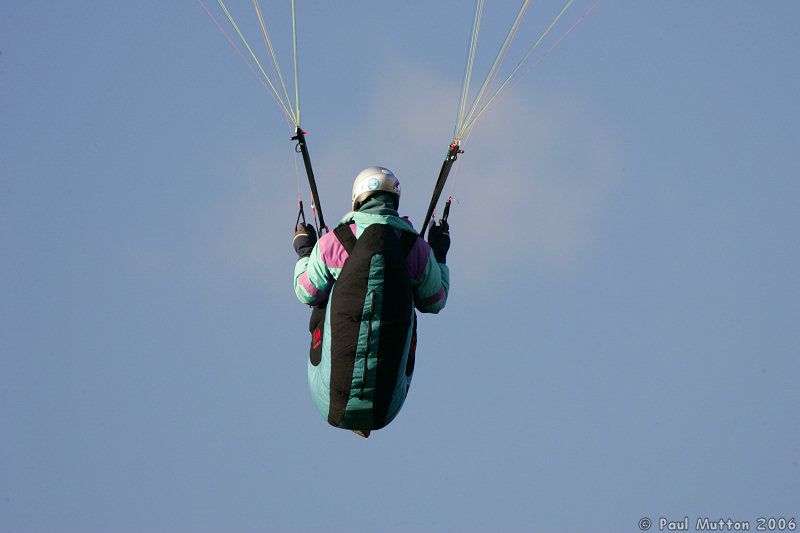

By 1948, the Rogallos had developed the first flying prototype: a completely flexible wing sewn by Gertrude from repurposed kitchen curtains.Īfter testing Rogallo's paraglider (now on view at the Smithsonian), NASA decided to stick to parachutes and water recovery for U.S. Working toward realizing that dream, Rogallo, along with his wife Gertrude, pursued the idea on their own time, testing a variety of designs in a small wind tunnel they constructed in their home. “Wouldn’t it be great,” Rogallo would muse, “if you could drive your car to the outskirts of town, unfurl a wing from the trunk, and fly out over the countryside?” Originally conceived in the mid-1940s as a way to make aviation simpler, more practical and economically available to everyone, the paraglider took its name from a combination of the words parachute and glider. So what happened to Rogallo’s paraglider?

History reminds us, however, that all the Gemini and Apollo flights were recovered by parachutes, with the capsules landing in the ocean and retrieved by Navy ships.

By December 1964, the paraglider was flawlessly flying through its entire flight sequence to successful touchdowns on land. What is almost lost to history is the simple fact that this fanciful wing actually flew, making it possible for returning spacecraft to land on runways. Gertrude and Francis Rogallo received permission to develop the invention on their own, and the two were awarded a patent for the “Flexible Kite” in the 1951.

“The paraglider was an interesting solution to the problem of capsule recovery,” says Smithsonian senior curator Michael Neufeld, “but it proved to be technically more complex than engineers realized at first.” Five cables attached the wing to the capsule and allowed astronauts to control the flight path. The giant kite-like wing of the Smithsonian’s Gemini paraglider dwarfs a wheeled capsule, with oversize, almost cartoonish inflated leading edges and keel for increased gliding efficiency. Visitors to the Smithsonian’s National Air and Space Museum’s Udvar-Hazy Center in Chantilly, Virginia, will find the antiquated relic suspended from the ceiling in the “Human Spaceflight” exhibition. The Gemini paraglider looks almost quaint to the contemporary eye, a futuristic brainchild of 1960s-era engineering. One application for Rogallo’s wing, the “paraglider,” developed under a NASA contract by North American Aviation between 19, would make it the chosen landing vehicle for the Gemini and Apollo programs, promising astronauts the autonomy of piloted landing on terra firma after returning from space. The moment proved auspicious, because for a brief period, the Rogallo wing, an innovative technology that might have rewritten the history of spaceflight re-entry and recovery, became the subject of much scientific inquiry and optimism-a kind of darling of the burgeoning space race.įrancis Rogallo, now known as the "Father of Hang Gliding," developed a flexible-wing paraglider that for a short while might have changed the way astronauts returned to Earth. Von Braun immediately grasped the potential of using a flexible wing to recover rocket booster engines, and invited Rogallo to Huntsville, Alabama, to show his team. Rogallo had demonstrated the gliding potential of his flexible wing before, but on this day his audience included the most recognizable and influential person in the rapidly evolving space race: the world-renowned rocket engineer Wernher von Braun. Its flight was curtailed only by the room’s white plaster wall, where with a crinkly thud, it hit a few feet from the ceiling and crumpled into a shapeless pile of mylar and string on the floor. Gravity soon balanced the payload against the glider, the wing took shape, and the model flew slowly across the conference room at NASA’s Langley Research Center in Hampton, Virginia. The tinfoil texture of the newly developed mylar crackled slightly as the model took flight. It was late spring in 1959, and the NASA aeronautical engineer was about to launch a small model of his parachute-like glider, just as he had done a thousand times before-limp wings held apart, a small payload suspended by a few lines in front of his head. Holding it at arm’s length above his head, Francis Rogallo’s finger tips carefully gripped each wing of a silver, diamond-shaped glider.


 0 kommentar(er)
0 kommentar(er)
